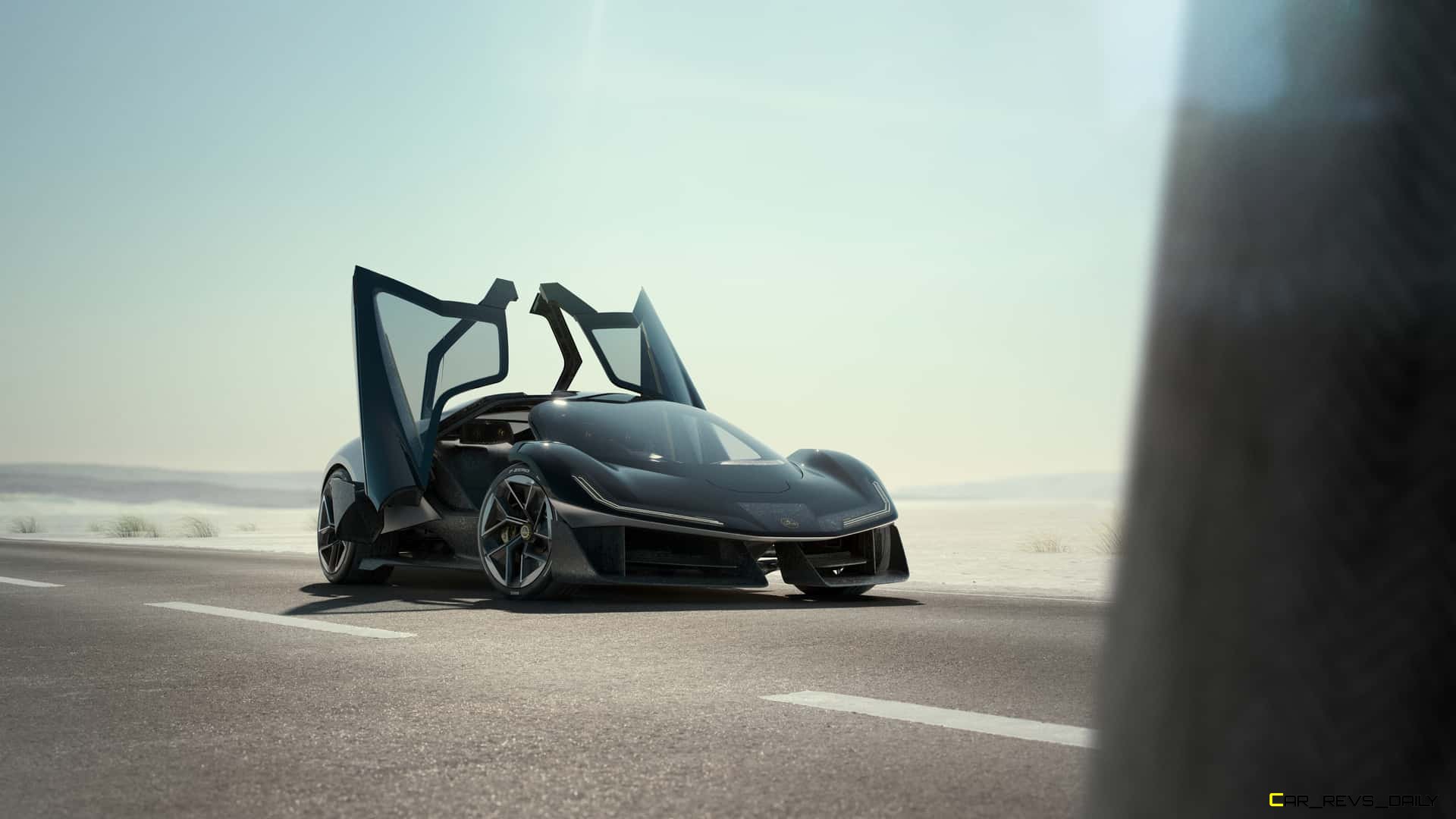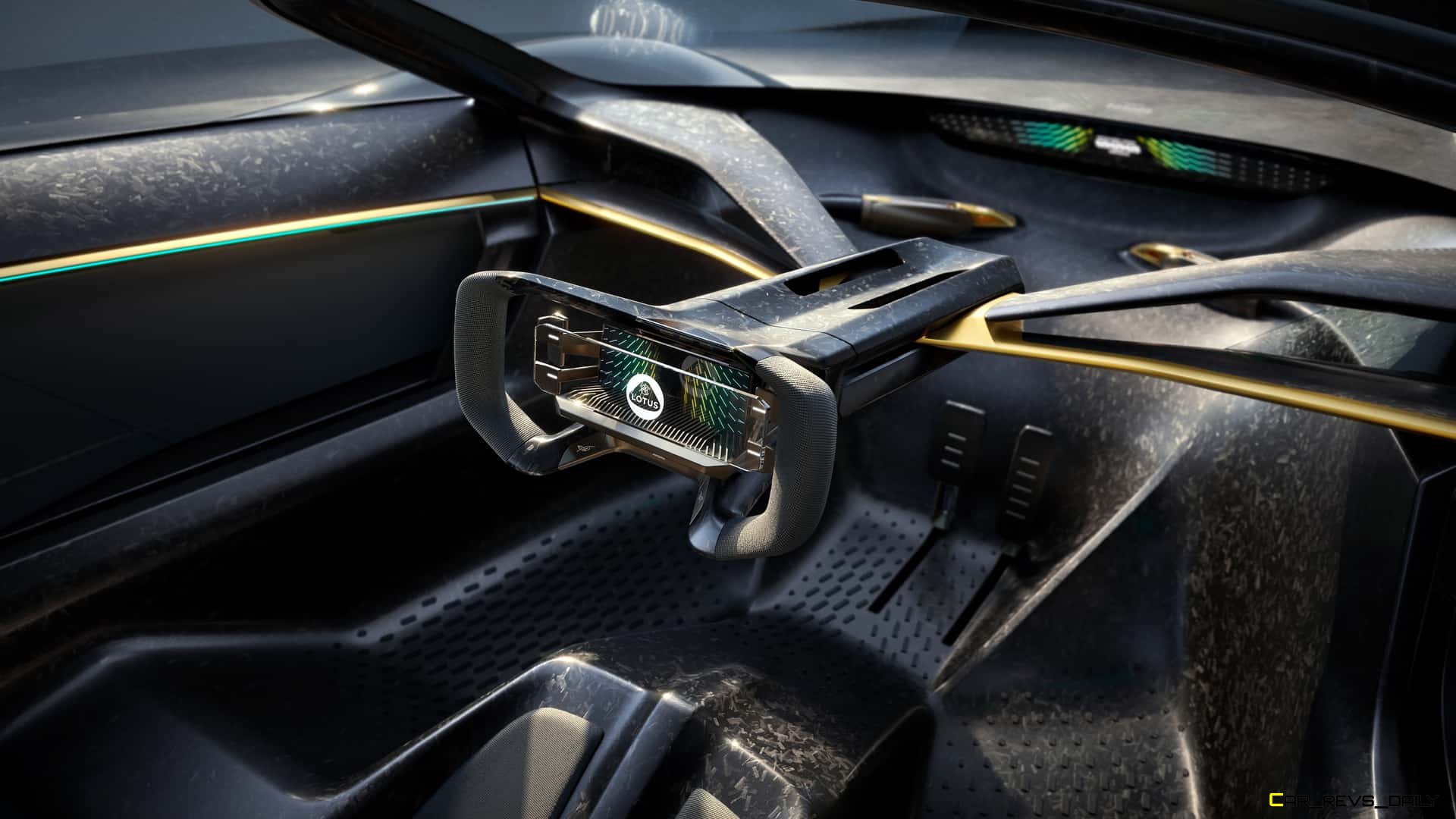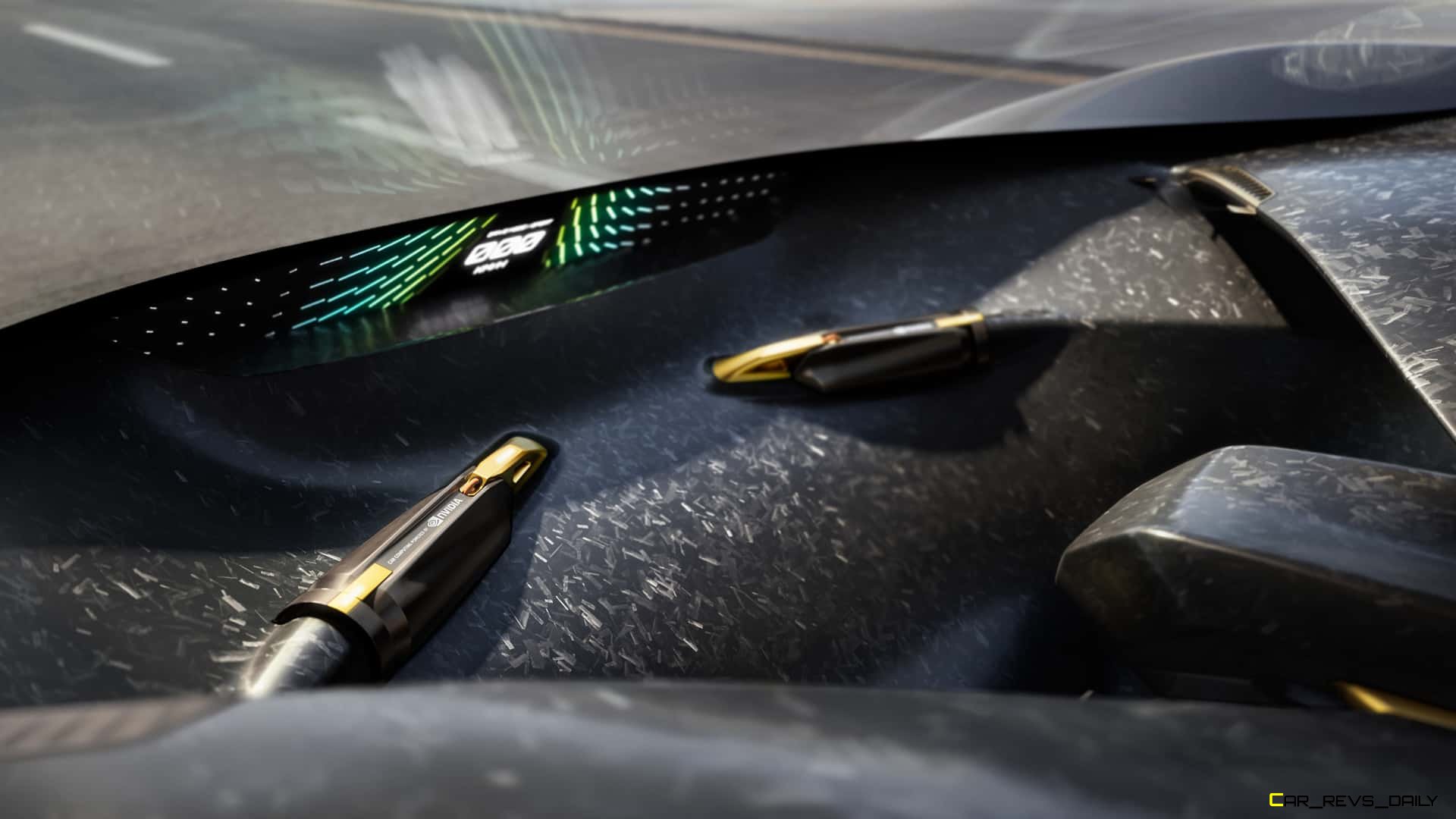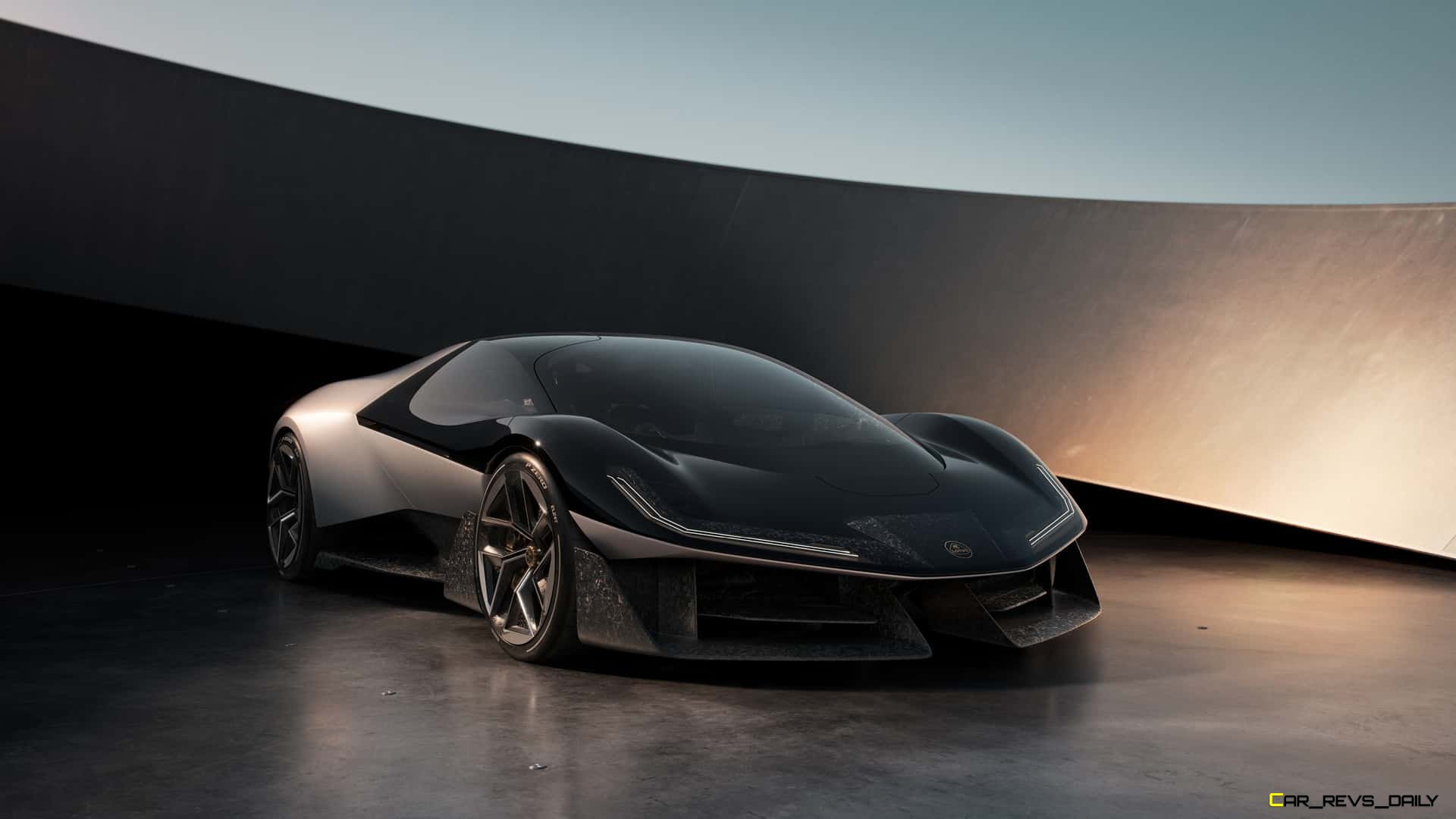Lotus is embarking on a new chapter in its history with the British automaker preparing to move on from ICE-powered models like the Emira into a future where EVs like the Eletre will become the new normal.
However, the company still has a wild side and it has decided to show off that bold spirit with its latest concept the all-new Theory 1 Concept.
Theory 1 highlights future Lotus design

Lotus says the Theory 1 is supposed to represent the brand’s design future with reports saying that it was partially inspired by the Esprit. The concept has a bold wedge-shaped profile with the front fascia getting a large nose blade with thin boomerang-shaped headlights. Lotus adopted a cab-forward design with some whiffs of the Esprit’s personality being present. The rear end gets a large rear diffuser, ultra-thin LED taillights, and a tail deployable spoiler.
The highlight here is the doors with occupants being treated to a visual show as the doors swing up and backward. The interior of the Theory 1 has a centralized seating arrangement with the driver getting a center-mounted seat while the two passenger seats are on either side. That’s similar to a McLaren F1 but we still love it all the same here in the Lotus. The interior of the Theory 1 gets a large heads-up display with the side mirrors being replaced by large screens on each side of the A-Pillar. Lotus also put odd inflatable pods in the seats, doors, and steering wheel with these pods delivering haptic feedback to the driver while also massaging the driver when the seat-mounted ones are being used.

The weirdest feature though is a new piece of technology Lotus calls “buttons on demand.” These buttons are formed out of a reactive textile material and can appear when the driver needs them and seamlessly disappear into the background. This technology has never been seen before and Lotus would be the first automaker to bring buttons of this type to the market if it manages to bring them into production.
“T]he technology is only there when you need it, and then it disappears, like buttons on demand,” Facundo Gutierrez, managing director of MotorSkins, the company behind the tech, told Wired. “For example, you are driving and there is a car coming up behind you. [The seat fabric] can give you a gentle tap on the shoulder. Or you get a phone call, and the button appears for you to take the call.”
Theory 1 rewrites Lotus peformance

A lightweight carbon fiber tub underpins the Theory 1 with the concept coming equipped with a 70 kWh battery pack that can deliver an estimated 250 miles of range. It also helps send power to the electric powertrain which makes 987 horsepower and can launch the concept to 60 mph in 2.5 seconds before topping out at 200 mph.
That’snoticeably less than the 2,000 hp you get in the Evija but the Theory 1 is also 660 lbs lighter than the Evija which could be a sign that Lotus is still finding ways to trim weight from its EVs even as engineers have to offset the heavy weight of the battery pack and the electric powertrain. “There’s been this period of maximalism, and people having to do one-upmanship and go above, above, above,” design vice president Ben Payne told Wired. “And I think we’ve reached that point where it plateaus in stylistic terms, and also in the demonstration of tech. We’re not in a crazy numbers race with this car.”
You can’t buy it, but it might influence production models

While Lotus has no plans to produce the Theory 1 concept itself, some of its core technologies might see the light of day in future Lotus models. The on-demand button technology would make production history and some of the weight-saving measures that the company did on the concept could help engineers reduce the weight of other production EV models. After all, Lotus was built on the foundation of providing lightweight sports cars, and finding ways to help live up to that mantle will help the brand’s automobiles stand out from the rest of the pack.
Of course, Lotus still has plenty on its plate with the company accelerating the launch of the Emira sports car as well as putting the final touches on the Eletre SUV.

Carl Malek has been an automotive journalist for over 10 years. First starting out as a freelance photographer before making the transition to writing during college, his work has appeared on numerous automotive forums as well as websites such as Autoshopper.com.
Carl is also a big fan of British vehicles with the bulk of his devotion going to the Morgan Motor Company as well as offerings from Lotus, MG, and Caterham. When he is not writing about automobiles, Carl enjoys spending time with his family and friends in the Metro Detroit area, as well as spending time with his adorable pets.

